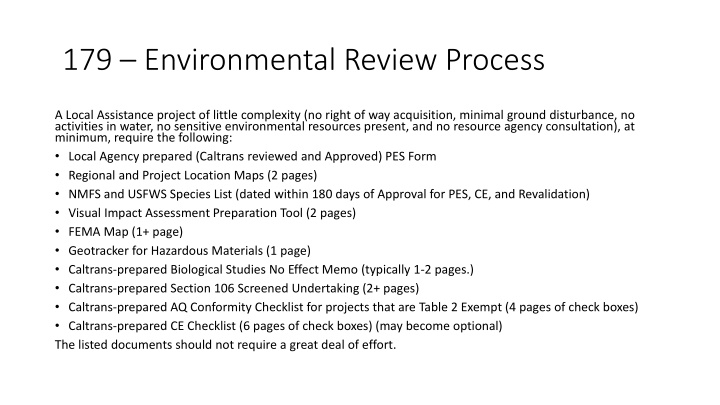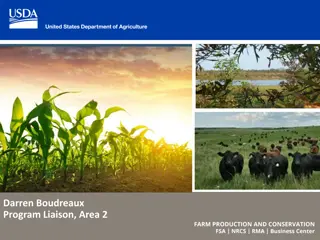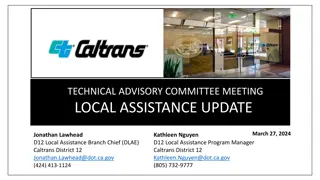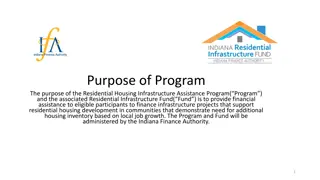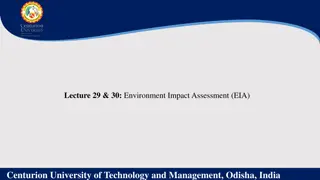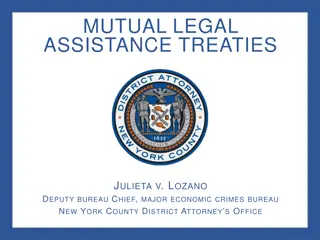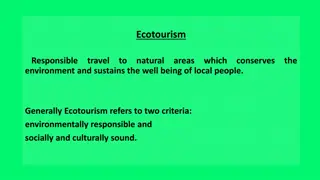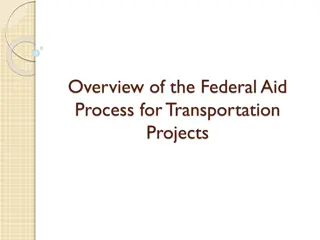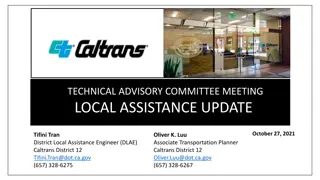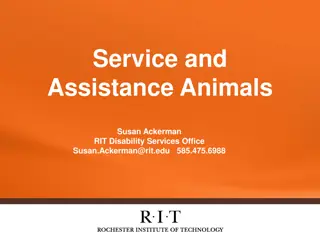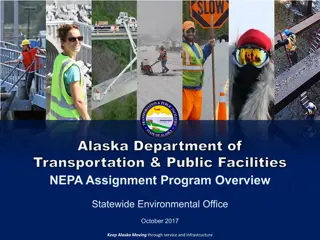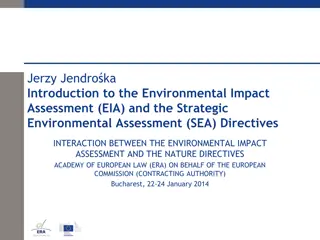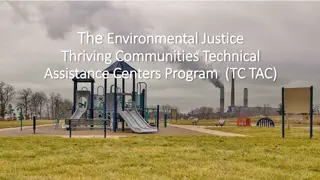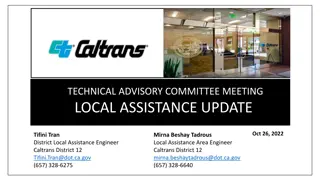Environmental Review Process for Local Assistance Projects
The environmental review process for local assistance projects involves specific document requirements, timelines, and considerations such as federally threatened and endangered species, permits, and agency consultations. Challenges may include inadequate scoping, staffing issues, and delays in completing studies.
Uploaded on Mar 12, 2025 | 2 Views
Download Presentation

Please find below an Image/Link to download the presentation.
The content on the website is provided AS IS for your information and personal use only. It may not be sold, licensed, or shared on other websites without obtaining consent from the author.If you encounter any issues during the download, it is possible that the publisher has removed the file from their server.
You are allowed to download the files provided on this website for personal or commercial use, subject to the condition that they are used lawfully. All files are the property of their respective owners.
The content on the website is provided AS IS for your information and personal use only. It may not be sold, licensed, or shared on other websites without obtaining consent from the author.
E N D
Presentation Transcript
179 Environmental Review Process A Local Assistance project of little complexity (no right of way acquisition, minimal ground disturbance, no activities in water, no sensitive environmental resources present, and no resource agency consultation), at minimum, require the following: Local Agency prepared (Caltrans reviewed and Approved) PES Form Regional and Project Location Maps (2 pages) NMFS and USFWS Species List (dated within 180 days of Approval for PES, CE, and Revalidation) Visual Impact Assessment Preparation Tool (2 pages) FEMA Map (1+ page) Geotracker for Hazardous Materials (1 page) Caltrans-prepared Biological Studies No Effect Memo (typically 1-2 pages.) Caltrans-prepared Section 106 Screened Undertaking (2+ pages) Caltrans-prepared AQ Conformity Checklist for projects that are Table 2 Exempt (4 pages of check boxes) Caltrans-prepared CE Checklist (6 pages of check boxes) (may become optional) The listed documents should not require a great deal of effort.
179 Environmental Review Process Tennessee (Non-NEPA Assignment) 90-120 days Arizona (NEPA Assignment) California Kern County Riverside County Ventura County Timeline Average FYs2016/20 169 days 170 days 48 days* 225 days(B) 115 Days(B) 126 Days 76 Days CE Format CEs similar to Caltrans Appendix G due to the length of the document. CEs can range from 10-30 pages. Two-page form which can be lengthened with continuation pages.
179 Environmental Review Process Tennessee (Non-NEPA Assignment) Arizona (NEPA Assignment) California Kern County Riverside County Ventura County # Federally Threatened & Endangered Species 111 64 280 Local Agency consults with CDFW for state listed species, can impact consultations with USFWS/NMFS Federally Recognized Tribes 7 21 109 Permits Local Agency is project applicant NEPA CE must be provided for Federal Permits for Federal Aid Funded Projects, with potential affect to project timeline
179 Environmental Review Process Inadequate scoping in the Preliminary Environmental Study effort. PES Form process requiring multiple iterations. Staffing or resourcing issues. Lacking education and experience, new staff assigned and unclear on previous agreements. Studies not completed in a timely manner by staff or consultant. Multiple levels of review. Funding, programming, design, right of way issues, such as incorrect F/STIP List additions or deletions, new features added or removed from project, need for Permits to Enter.
179 Environmental Review Process LOCAL ASSISTANCE RISK BASED STEWARDSHIP AND OVERSIGHT EFFORTS Development of New Preliminary Environmental Study (PES) Form Team is working to develop smarter PES Form that includes the ability to make Risk Based Decisions though the Preliminary Environmental Study process. Form is currently in development with Caltrans Forms and IT divisions. Analysis of Level of Effort required for NEPA Studies and Technical Documents Team is analyzing the level of effort required for environmental analysis and compliance to develop additional efficiencies. Teams are currently working on improvements to Location Hydraulics and Biological studies.
